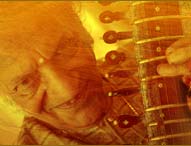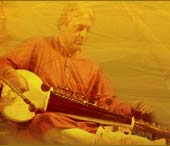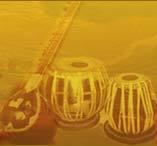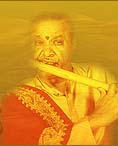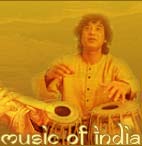Sitar is one of the most popular classical instruments. It played a significant role in introducing western audiences to Indian classical music. It is categorized as a chordophone in the lute family. The sound of Sitar evokes thoughts and feelings of the sub-continent. It is a plucked string instrument predominantly used in Hindustani Classical Music. The word "Sitar" has an Iranian origin and refers to three strings, despite of it being a multi-stringed instrument. Nowadays, Sitar has become the most popular melody instrument in classical northern Indian music today and is, together with the Surbahar and the Tanpura, part of the family of long-neck lutes. Despite of it being a popular instrument, its origin is not clear and revolves around a number of theories. It is believed to have evolved into its present form in the 1700's, during the collapse of the Moghul Empire, as a marriage between the Persian Setar and the South-Indian Vina, while using the characteristically resonant bridge of the Tampura.
History
The roots of Sitar can be traced to an instrument first built under Medieval Muslim influence from the tanbur, a Middle Eastern lute with a distinctive long neck as well as from the vina, a narrow, intricately crafted Indian Zither. Although images similar to the Sitar date back to 1800, the more well-known form of the Sitar had become prominent by the mid nineteenth century. The long heavy neck and gourd body produce a rich resonance and harmony, and is the dominant instrument used in Hindustani classical music and is played as an accompaniment to dance throughout India and Pakistan. Sitar music is universal in these and other Middle Eastern countries. More intricately added design innovations made during the mid-twentieth century have given form to the standard Sitar made popular by musicians such as Ravi Shankar who is the utmost popular Sitar player, and rock acts such as The Beatles, looking to infuse their music with the exotic sound that emanates from the intricately crafted instrument.
Types Of Sitar
Ravi Shankar Sitar
It has been named after the musical legend as well as an extremely talented sitarist Pandit Ravi Shankar. RV sitars feature 12-14 sympathetic strings and are equipped with bass melody strings. This type of sitar also boasts of a second small pumpkin that is attached near the top of its neck. The Ravi Shankar Sitar is constructed with two extra bass strings. As a result, these types of sitars produce a deep, bass-filled sound. Often, RV sitars serve as works of art and music. These sitars are usually decorated with a good deal of extra carving and penwork.
Vilayat Khan Sitar
It is slightly smaller than the RV style and features just one gourd, and is equipped with fewer sympathetic strings and features absolutely no bass strings. This kind of Sitar is constructed with an additional rhythmic accompaniment string, known as a "chickaree." This additional feature enables the Vilayat Khan version of the instrument to produce a fuller and more chordal sound quality. This particular Sitar is played by those who belong to the "Etawa Gharana" and the performers embrace a minimalist approach to decoration.
The Bass Sitar
Besides the two main types of Sitars, there's another option for music lovers. The "Surbahar," or bass sitar, is a larger type of sitar that typically employs very thick strings and a much wider neck. The surbahar sports a broader fret-board, as well. This type of sitar offers a deeper tonal quality, as well. Among sitar enthusiasts, this type of sitar is considered much more difficult to play than other types.
Occasions
Sitar is generally played during music festivals for Hindustani Classical Music, in renowned temples for the "raga" and "dhwani".
Famous Sitar Players
The eminent sitar players who contributed in the last 80 years are Mustaque Ali Khan, Lakhan Bhattacharya, Ustad Inayat Khan, Bhagwan Das, Gokul Nag, Pandit Ravi Shankar, Ustad Vilayat Khan, Ustad Halim Jaffar Khan, Ustad Imrat Khan, Balaram Pathak, Nikhil Banerjee, Rais Khan, Manilal Nag, Kartick Kumar and Raj Bhan Singh. The famous sitar players of the present day are Sujat Khan, Budhaditya Mukherjee, Sahid Pervez, Irshad Khan, Nishat Khan, Niladri Kumar, Purbayan Chatterjee, Kushal Das, Anuska Shankar, Nayan Ghosh, Partho Das, Sunil Kumar Das, Soumitra Lahiri, Kartik Seshadri, and others.
